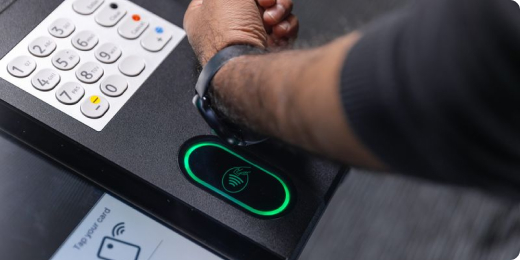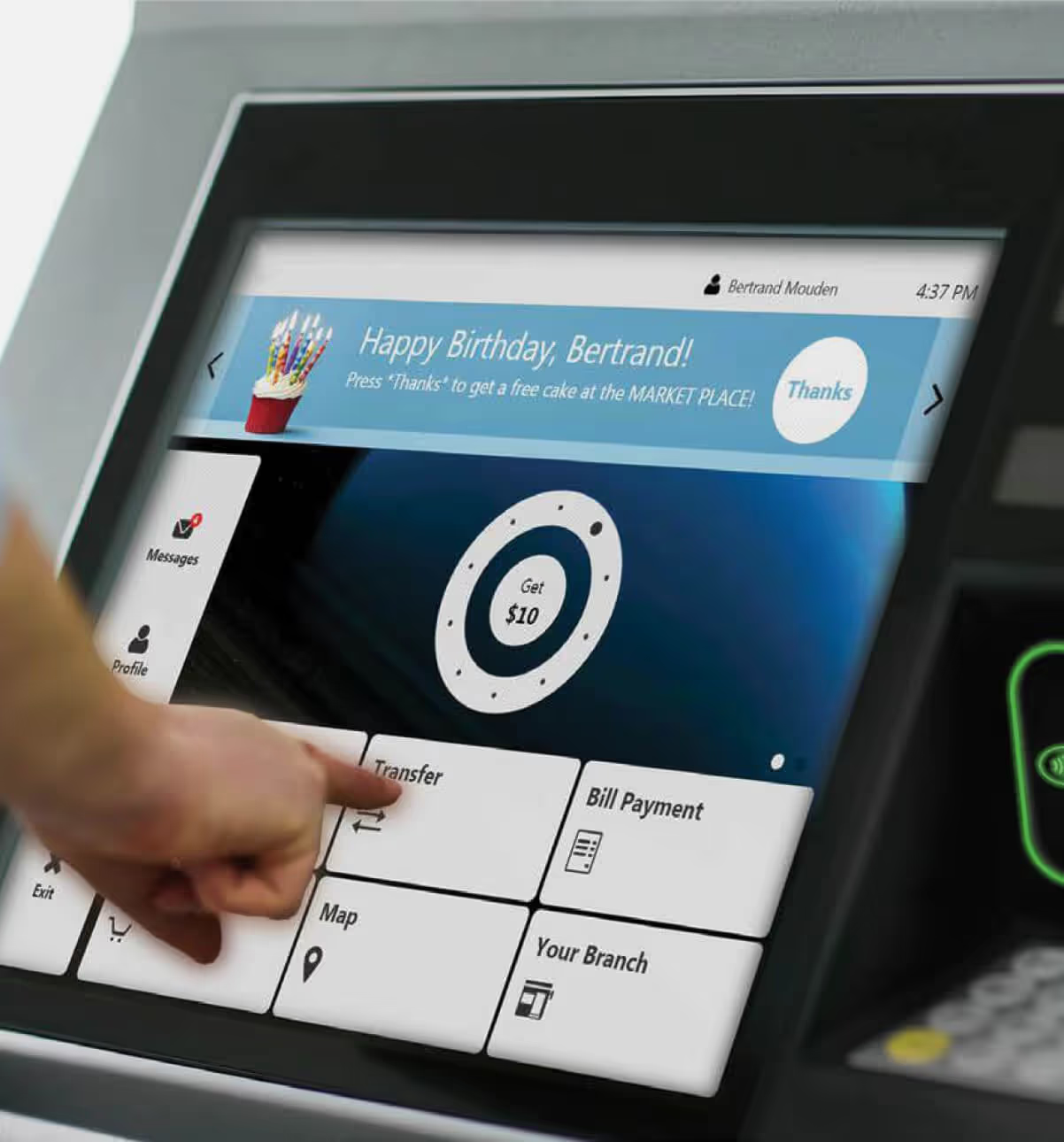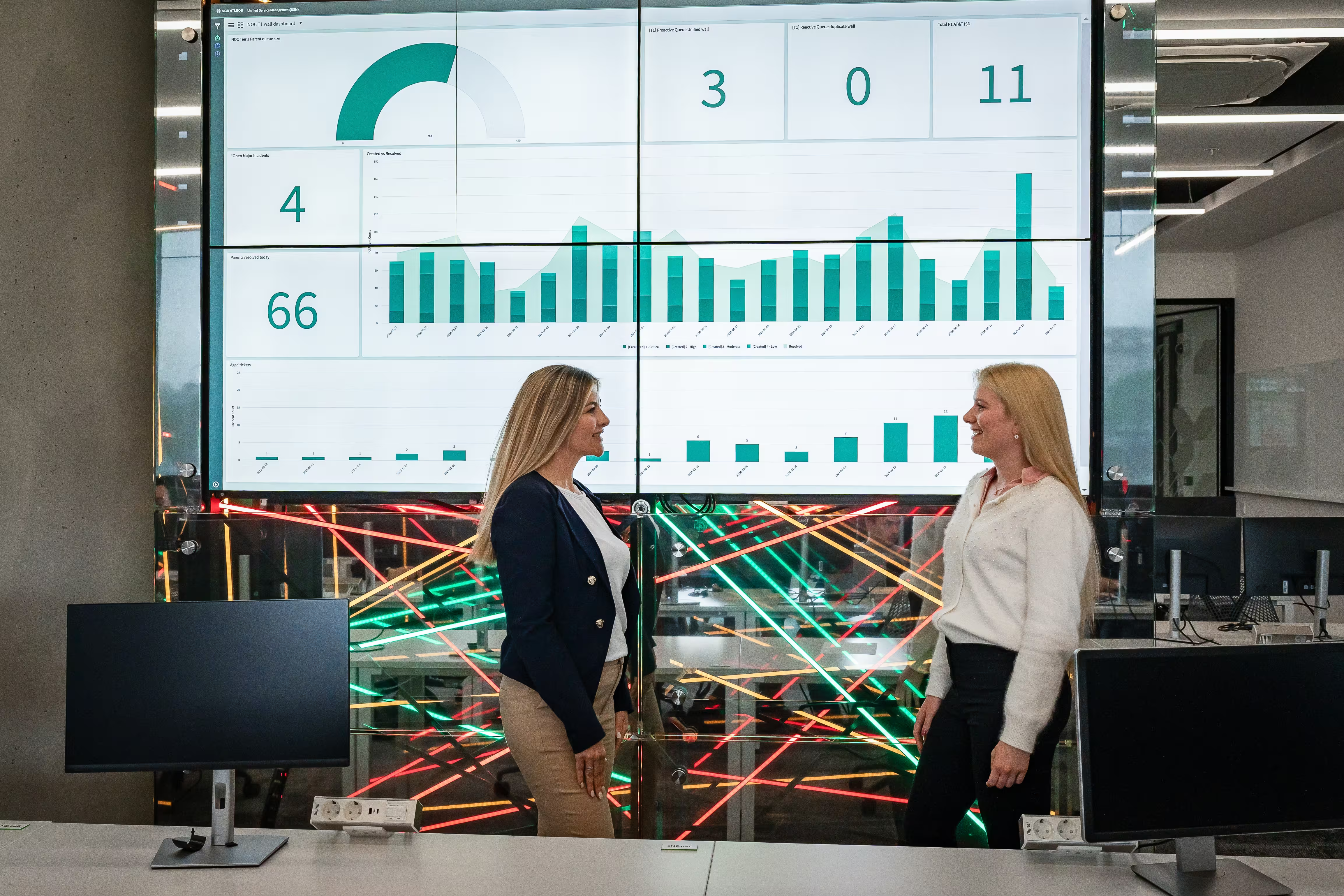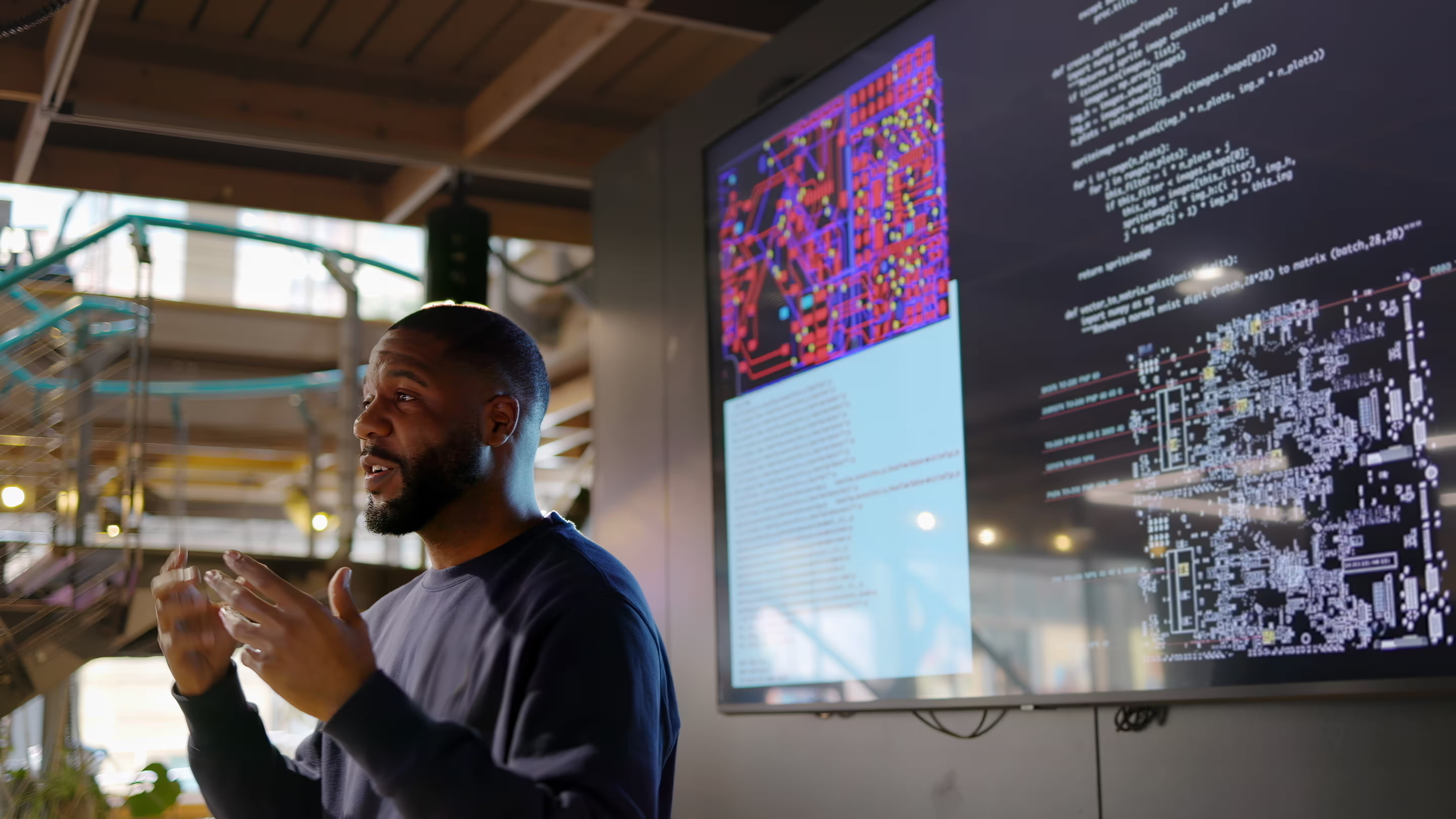A history of ATM innovation
Now that access to our finances is only a click away, it’s hard to imagine a time without smartphones, digital banking and ATMs when people had to wait in line at the bank to check their account balance or complete a transaction. That was the reality of the 1960s.
The financial landscape started to change in 1967 as bankers around the world learned about a new technology. An invention called an automated teller machine (ATM) was deployed in London, allowing customers to get cash...without having to walk into a branch.
It was a big deal for financial institutions (FIs) and their customers.
No longer bound to banking hours, customers widely embraced the ATM, which probably didn’t surprise the man most often credited for its invention: British inventor John Shepherd-Barron.
But how he got the idea might surprise you. As the story goes, Shepherd-Barron was in the bath when he had a thought: If a vending machine could dispense candy bars, why couldn’t another type of machine distribute cash?
Around the same time, engineer James Goodfellow invented the personal identification number (PIN), which helped self-service banking technology take off.
Now, with 2.9 million ATMs across the globe, self-service is the most-used method for consumers to interact physically with their bank. And the ATM can do much more than dispense cash.
Throughout the ATM’s almost 60-year history, NCR Atleos has been at the epicenter of innovation, delivering cutting-edge self-service technology that enables enhanced customer experiences and improved operational efficiency.
Seeing the value they bring, FIs invested in ATMs
The decades that followed the introduction of the ATM transformed this new form of banking. In the US, Dallas-based engineer Donald Wetzel pioneered the development and deployment of the ATM, with the first installed at the Chemical Bank branch in Rockville Center, New York, in September 1969.
Popularity continued to grow around the world, as did the functionality of the ATM. In the 1970s, ATMs started to do more than cash withdrawals, adding the ability to check account balances and make deposits. With 1,000 ATMs installed by the end of 1971, it was clear FIs understood the convenience self-service brought to their customers and invested accordingly.
In 1977, Citibank invested more than $100 million into the installation of ATMs across New York City. At the time, people thought it was a gamble, but when a blizzard hit the city, banks were forced to close for days and ATM use rose by 20%—so, it certainly paid off.
It was in that same year that NCR launched its first ATM, the NCR model 770. It came just three years after NCR changed its name from National Cash Register to NCR Corporation to reflect its updated focus on innovative transaction technologies and computing. The easy-to-operate self-contained 770 unit included a terminal, controller and cash dispenser within one safe.
By the early 1980s, NCR had launched the 5070 ATM. Developed in Dundee, Scotland, it achieved global success through new standards of excellence including reliability, flexibility and increased capability. As the name suggests, the 5070 could handle 5,000 transactions before it needed to be replenished. It featured modular components for ease of servicing and was based on a new software and electronics platform, enabling connection to worldwide networks.
Once the ATM became an established and familiar part of the banking system, the next frontier of innovation was usability. NCR drove the channel forward in the 1980s with the introduction of color displays and functional display keys (FDKs). By 1984, there were 100,000 ATMs installed globally. In 1989, the world’s first intelligent deposit ATM was installed, allowing customers to deposit cash or checks in their accounts without a deposit envelope. By 1992, functionalities such as thermal receipt printing, audio input and signature capture were becoming common.
Thanks to the ATM Safety Act of 1996, self-service security advanced significantly. Banks were required to add surveillance cameras in addition to other security features such as reflective mirrors, locked entryways and minimum standards for exterior lighting.
The 1990s also saw off-site ATM installations grow, with more independent self-service machines available at locations beyond bank branches, including grocery stores and gas stations. These independent ATMs improved access to cash, allowing people to make withdrawals regardless of their proximity to their bank.
ATMs in the 21st century
In the early 2000s there were more than 1 million ATMs installed globally. People could conduct even more transactions at the ATM, from simple cash withdrawals and balance inquiries to opening an account and applying for a debit card. And, as reported by the Economic Times, some ATMs in this era offered even more unique services like paying income taxes, applying for personal loans and paying bills.
In the 2000s, ATMs began to allow mixed media deposits, accepting cash and checks in a single bunch. They also started to have dual-dispense capabilities, which increased overall cash capacity.
A small ATM advancement leads to big benefits for FIs
As cash deposit volumes increased, FIs needed to find a way to optimize their cash ecosystem. Cash recycling became the next innovation on the horizon, which significantly improved efficiency in the FIs’ cash management processes.
Today, cash recycling is the largest-growing ATM segment globally. According to the The Business Research Company, its numbers are predicted to increase with a CAGR of 5.7% by 2029. NCR Atleos continues to invest in cash recycling technology, delivering innovative solutions that seamlessly combine hardware, software and services.
ATMs turn interactive
As FIs shifted more transactions to the ATM, customers demanded a choice between in-person and self-service banking. In addition, FIs needed to enable customers to make more complex transactions outside of normal banking hours
Interactive teller machines (ITMs) provided the solution. Launched in 2012, ITMs use a two-way video link via a call center to provide face-to-face teller support to ATM customers. ITMs are used widely across the US, Canada and in the Middle East. NCR Atleos has an estimated 58% market share globally with a range of innovative multi-function ITMs that enable a comprehensive banking experience.
The benefits for customers include the convenience and ease of using an ATM for nearly all their banking services, plus access to teller assistance without having to visit their bank. For FIs, ITM benefits include increased customer loyalty in addition to smoother operations inside the branch with reduced queues and faster transaction times while still providing that critical face-to-face connection.
During the pandemic, ITMs were important, as FIs had to assist their customers while closing branches and practicing social distancing. With ITMs, many FIs could let their tellers work from home.
Read about the changes First Ontario Credit Union made to their business during the pandemic.
ITMs continue to play a pivotal role in banking, providing a solution that helps FIs cut costs and improve efficiency while continuing to deliver teller-assisted services. As many bank branches undergo digital transformation, ITMs will be critical to ensuring customers can continue to conduct transactions that require a human touch.
ATMs that perform like a smartphone
Smartphones, devices that have changed the face of consumer electronics, have had a big design impact on ATMs. Since the launch of the device, the form and function of ATMs have been built to mimic the smart technology’s intuitive user experience.
From touchscreens through finger pinch-and-zoom to mobile authentication, banking customers now enjoy an ATM experience similar to what they’re used to on their handheld devices. They can have a seamless transaction experience, whether pre-staging transactions on a mobile device, banking on their phone or at the ATM.
The NCR SelfServ 80 Series was one of the first in the industry to mirror the design aesthetics of electronic devices. The smartphone and the ATM also work hand in hand to offer contactless banking—ANZ and NCR Atleos were the first to enable transactions initiated with a single card tap.
And now, thanks to mobile device authentication, FIs can take contactless banking to the next level. Contactless connection can go even further by using the FI’s banking app to pre-stage the entire transaction, with the ATM solely providing the cash after banking customers have tapped their smartphone on the contactless reader.
In 2012, Royal Bank of Scotland launched its Get Cash service, allowing customers to withdraw money from ATMs using a code sent to their mobile phone, eliminating the need for debit cards. And in 2020, Barclays introduced the UK’s first contactless mobile cash facility.
The cardless ATM market is expected to grow 10.6% between 2022 and 2031, as more ATMs adopt technologies like near field communication (NFC). NCR Atleos continues to lead in this space with innovations like its ReadyCode passcode functionality and digital-first ATMs that support cardless interactions.
ATMs with advanced printing capabilities
Over the years, most ATMs have only had the ability to print small thermal paper receipts. But today, some ATMs can deliver high-quality laser prints on standard A4-sized paper, which is particularly useful for businesses or individuals who need official records for accounting or legal purposes.
Other modern ATMs allow users to open accounts and receive a bank card immediately on-the-spot. Using traditional means and sending bank cards via mail can cost an FI upwards of $100 per card, taking around 10 days. These new ATMs can print cards in about three minutes, improving convenience for the customer and saving the FI money and resources. Additionally, immediate card issuance eliminates the risk of the card getting lost or stolen in the mail.
The future of ATMs
So, what does the future hold for the ATM? One thing is clear: this channel will remain extremely important and continue to evolve.
Customers will have access to an ever-expanding range of services at the ATM, from core functions like paying bills and transferring money between accounts to buying stamps, subway tickets and gift certificates. Interacting with virtual tellers is also likely to become more widely available for people who need assistance completing more complex transactions at the ATM.
Artificial intelligence (AI) is developing at a rapid pace, and the ATM is no different. NCR Atleos uses AI in a number of ways, including helping to predict when engineers should be dispatched to an ATM for preventative maintenance. Other applications include using AI to enhance personalization, displaying advertisements and offers tailored to a user’s age, financial behavior or account status. Some ATMs even use AI to power conversational interactions with customers, delivering personalized service for routine transactions while freeing FI employees to focus on assisting with more complex tasks.
As far as security is concerned, biometric authentication (via facial recognition and fingerprints) is something consumers can expect to see more of, along with improvements in software to combat evolving cyber threats. AI can also help strengthen security, identifying and flagging anomalies in customer behavior as potential fraud.
Hologram ATMs are another development improving financial access and security. Using holographic projection technology, these ATMs create a 3D interface that reduces physical touchpoints, so they’re less susceptible to fraud and tampering while offering multilingual and voice-assisted features, making banking easier for people with disabilities.
What is the most impactful innovation shaping the future for FIs? Find out here.
The emergence and development of the ATM over the past five decades has had a transformative effect on the banking industry. Now it’s time to look forward to what the channel can achieve in the decades to come and for FIs to plan and implement a solid ATM plan that best serves their customers.
In many cases, ATM as a Service (ATMaaS) provides a flexible, cost-effective solution for FI’s, addressing modern challenges in an innovative way. NCR Atleos ATMaaS allows FIs to streamline costs while ensuring reliable service for customers. FIs can focus on their core services and leave ATM management to the experts.
More innovation ahead
In a little more than 50 years, the ATM has come a long way to meet growing market trends, and it will continue to evolve to meet changing consumer demands. What seems certain is that the ATM, something that started as a bathtime idea, will continue to meet consumers’ expectations for easy, convenient and digital-first banking services well into the future.
NCR Atleos will keep leading the way, serving as an epicenter for ATM innovation. With more than 100 years of experience, 500 patents, 8,000 engineers and four innovation labs around the world, the company is invested in developing innovative solutions that help transform and modernize access to financial services while improving customer experiences.
Let’s explore what’s possible for your business. Our team is ready to connect and discuss tailored solutions that meet your goals.
Thank you for reaching out. A member of our team will be in touch shortly to continue the conversation.







%20(1).jpg)





%20(1).jpg)

%20(1).jpg)




%20(1).jpg)
%20(1).jpg)
%20(1).jpg)

%20(1).jpg)
%20(1).jpg)
.jpg)
.jpg)
.jpg)
%20(1).jpg)
.jpg)
.jpg)
.jpg)




.jpg)
.jpg)
.jpg)
.jpg)
